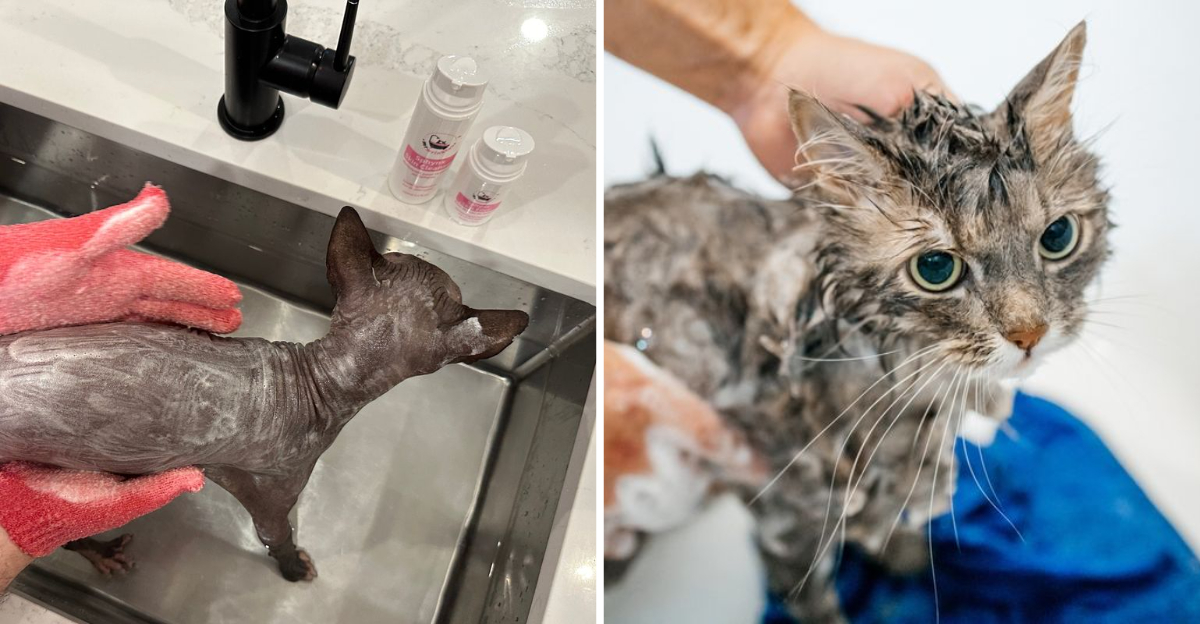📖 Table of Content:
Cats are generally known for their self-sufficient grooming habits, but there are specific instances where a bath becomes necessary. Understanding when and how often to bathe your cat can enhance their well-being and hygiene. This guide delves into the situations that may require you to bring out the shampoo and water, offering insights into maintaining your feline friend’s cleanliness without overdoing it.
Exposure to Harmful Substances
Imagine your cat’s curiosity leading it straight into a spill of motor oil or antifreeze. In such cases, immediate action is crucial. A bath isn’t just about cleanliness; it’s a matter of safety. Ensure you use a pet-safe shampoo to cleanse away these harmful chemicals effectively.
Always handle such situations promptly to prevent your cat from ingesting any toxins. Remember, your cat’s health depends on your quick response.
Being aware of your surroundings and acting fast can keep your furry friend safe from potential dangers lurking around the home.
Skin Conditions
A cat with seborrhea or other skin conditions might find relief in a medicated bath. The soothing process helps alleviate itching and discomfort.
Bathing can be part of a therapeutic routine, easing symptoms and improving overall skin health. Consult with your veterinarian to choose the right products that address your cat’s specific needs.
Regular, gentle baths can enhance the quality of life for cats with skin issues, making their days more comfortable and less itchy.
Inadequate Self-Grooming
As cats age or gain weight, grooming can become a challenge. An elderly or overweight cat may struggle to keep their coat clean, leading to a greasy, unkempt appearance.
Regular baths help maintain their hygiene and prevent skin problems. A grooming routine tailored to their limitations can significantly enhance their quality of life.
Consider this an opportunity to bond with your cat, ensuring they remain fresh and well-cared-for despite physical challenges.
Long-Haired Breeds
Long-haired breeds like Persians can often become victims of matted fur if not regularly maintained. Bathing helps to manage their luxurious coats, keeping them smooth and tangle-free.
Regular grooming should accompany these baths to prevent discomfort and skin issues. It’s not just about appearance; it’s about ensuring your cat feels comfortable and healthy.
With proper care, these elegant felines can flaunt their beautiful fur without the worry of mats or tangles.
Hairless Breeds
Hairless breeds like the Sphynx require more frequent baths due to the natural oil buildup on their skin. Without fur to absorb these oils, your cat could leave marks around your home.
Weekly baths help manage this oiliness, ensuring your home and your cat remain clean. Use gentle shampoos that won’t irritate sensitive skin.
These unique cats may lack fur, but they make up for it with their affectionate nature and distinctive appearance.





